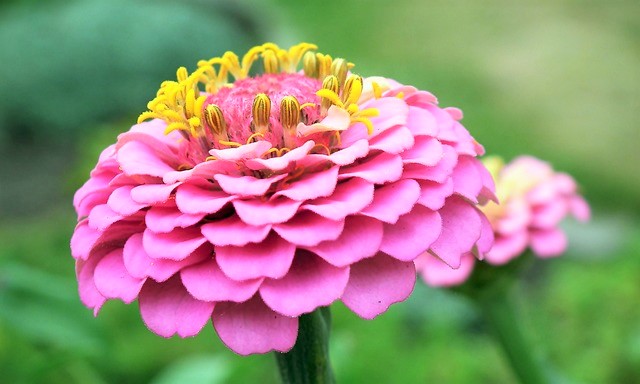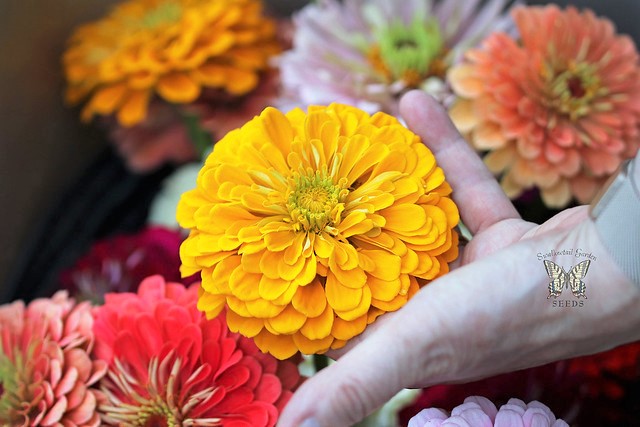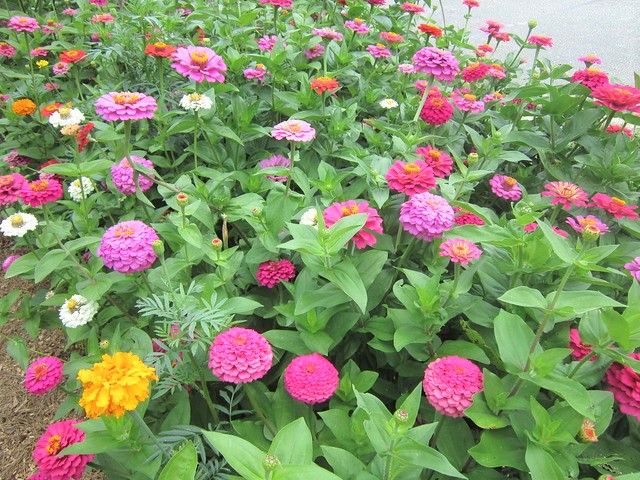Last updated on June 12th, 2023 at 04:48 am
There’s nothing quite like the sight of a blooming perennial garden. But growing a flower garden from scratch takes a lot of hard work. Flowers are not created equal, and some need a lot more work than others.
Choosing the right flowers can help you minimize the labor required to maintain a flourishing garden. As a smart gardener, zinnias are one of the best flowers you can plant in your garden. They grow quickly and blossom heavily. Also, zinnias don’t need much in the way of care.
But before you start getting your hands in the dirt planting zinnias, there are a few things you need to know. For instance, are Zinnias perennials or annuals? This article covers everything you need to know about this unique plant.
Zinnia Perennial Zone
The first step to flower gardening is knowing your zone. The US is a vast country with varying climatic conditions. Not every perennial flowering plant can thrive in every climate. A flower that thrives in one area may not even sprout in another.
That’s why the US Department of Agriculture (USDA) created the Plant Hardiness Zone Map. First published in the 1960s, this resource helps gardeners make informed decisions vis-à-vis what plants to grow in their gardens.
The map splits North America (USA and Canada) into 11 distinct zones based on seasons, elevation, humidity, and temperature. Using this map, you can determine which plants are more likely to thrive in your location.
So, what’s the Zinnia perennial zone? As mentioned earlier in the article, these flowers are quite easy to grow. As a result, zinnia flowers will do well in Zones 3 through 10 as defined by the USDA Plant Hardiness Zone Map.
Are Zinnias Perennials In Zone 9?

Before we answer this question, there’s something we need to get out of the way. See, technically, zinnia flowers are annuals. Annuals are plants that go through their lifecycles in one growing season.
However, zinnia flowers regrow rapidly from seeds or belowground bulbs under the right conditions. This ensures new plants keep coming back every growing season and can therefore be considered perennials in some areas.
Zinnias tend to behave like perennials in warmer parts of the country, especially from USDA Hardiness Zones 9 through 11. In colder zones, they’ll just wither away and die without coming back. So, yes, zinnias are perennials in Zone 9.
How Tall Do Zinnias Grow?
Zinnia plants come in a variety of shapes and sizes. There are taller varieties and dwarf species. The latter grow between six and 12 inches tall, making them ideal for indoor spaces.
The taller zinnia species can grow up to four feet tall. However, the vast majority of zinnias will grow to a height of between one and three feet. A few factors may affect the height of your zinnias, including:
- Pruning. With proper pruning practices, zinnias can grow taller.
- Spacing. Ensure your zinnia plants are not too crowded if you want them to grow to optimal height.
- Nutrients. Like other plants, zinnias will grow bigger and bloom more heavily in nutrient-rich soils.
- Conditions. Factors such as temperature, exposure to sunlight, and watering will also have an impact on how tall your zinnias grow.
- Diseases. Plant diseases and pest infestations can weaken the plants and stunt their growth, so watch out for that.
When to Plant Zinnias
So, what’s the best time to plant zinnias? One thing we’ve seen throughout this post is that zinnias are quite easygoing as far as plants go. They don’t have a lot of requirements, and the same applies even when it comes to planting.
As far as the timing goes, the best time to sow Zinnia seeds is spring. That should be right after the harsh frost season has elapsed. You can sow zinnias seeds indoors to get a head start on the blooming season.
You can then transplant the seedlings in your garden when the weather allows it. If you are just starting, you can buy the seeds online but if you’ve been growing zinnias for a while, get your seeds from spent blooms during fall.
Do Zinnias Need Full Sun?

In terms of sunlight, zinnias thrive where they can get at least six hours of direct sunlight every day, so you can say they need full sun. These gorgeous flowers are very hardy and will also do relatively well in partial sun or partial shade. However, zinnias will not bloom fully — if at all — with no direct sunlight.
Zinnias also do particularly well in hot conditions. That’s why these flowers thrive in the summer. You can also grow zinnias in indirect sunlight, but you need to ensure that they get a minimum of eight hours of indirect sunlight.
Perennials That Look Like Zinnias
Many perennial flowers look– and even behave — like zinnias. Dahlias are a good example of perennial flowers that resemble zinnias. Both flower types belong to the sunflower family and each boast an impressive color palette.
Zinnias also share many similarities with daisy-type flowers. Other perennials flowers that look like zinnias include:
- Coneflowers
- Coreopsis
- Blanket flower (aka Gaillardia)
- Cosmos — which are also annuals that behave like perennials in some zones.
- Chrysanthemums
Do Zinnias Self Seed?
As mentioned earlier in the article, zinnias are annual flowering plants. They can’t tolerate fall and will wither off in the earliest hard frost of fall. However, they drop a lot of seeds upon maturity and will self-sow and regrow san your intervention.
To increase the chances of your zinnias self-seeding, leave some flowers on the stalk until they completely dry up. That way, you’ll see them pop in your garden the following year particularly if you live in the warmer zones.
Zinnias, the Perfect Flowers for Your Garden!
When it comes to flower gardens, zinnias are a smart choice. They are hardy, low maintenance, easy to grow, and guarantee an explosion of color with their preposterous palette. All these qualities make zinnia flowers ideal for your home garden.
One thing that makes zinnias especially unique is the fact that they can be classified as either annuals or perennials, depending on the growing locations or climate zones. You can use the USDA Plant Hardiness Zone Map to plan your gardening.
